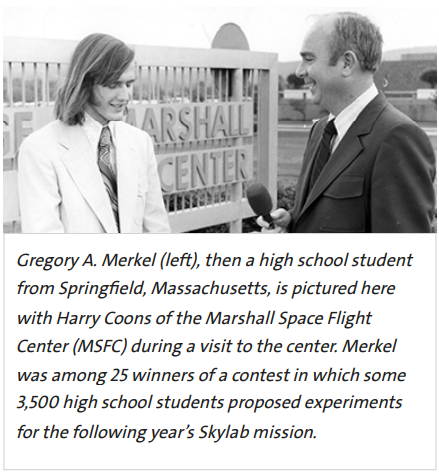A Corning Inc. Tribute to Greg Merkel
Jan 28, 2022
Issue 3632
The following article was written by Nicholas McAdam of the S&T Marketing and Communications group at Corning Incorporated. We received permission to share it with the CSGA community.
Research Fellow Greg Merkel passes at age 67, leaving a significant impact on technical ceramics
Gregory Merkel, Research Fellow in the Crystalline Materials Research department passed away suddenly on January 7, 2022 at the age of 67. Known for his quest of beauty and strong intellectual curiosity, Greg held an enthusiasm for glass that spanned all its aesthetic, scientific, and historical aspects.
Greg began his career at Corning in 1981. For over 25 years, he collected and studied 19th and early 20th Century iridescent art glass and luster ceramics with a focus on Steuben glass that began in 1903. His interest in the science behind these materials led him to compile and interpret the glass formulas in the laboratory notebooks of Frederick Carder, former Director of Steuben Glass Works, which are housed in the Rakow Research Library at the Corning Museum of Glass (CMOG). Greg was also working on a comprehensive book on Steuben colored glassware manufactured from 1903 to 1933.”
As a scientist, Greg Merkel will be remembered for his versatility, breadth, and unmatched ability to think deeply about complex topics and then explain them clearly,” said Cameron Tanner, principal research scientist, Ceramics. “A common thread to all of Greg’s work is a focus on basic understanding in addition to technology. This is most clearly seen in his technical tutorials; a famous example is the reaction sequence for Celcor – ‘Cordierite formation in 28 simple steps.’ Greg’s presentations and reports also reflected his appreciation for style; they are works of art. Greg was also a genuinely kind person who cared about progress and people. He engendered respect from and set an example for all and especially young scientists to aspire.”
Working closely with Dr. Robert Brill, emeritus research scientist at CMOG, Greg conducted x-ray fluorescence spectrometry (XRF) analysis on Tiffany foil-baked and iridescent glass from The Neustadt’s Glass Archive. Some of his research was shared at the Carder Steuben Symposia and the Museum’s Annual Seminar on Glass in 2019.
Greg also shined as a teacher, guiding many of today’s leading glass scientists at Corning to success. “Greg was such an inspiration to me, and I have learned so much from him over the years,” said Steven Ogunwumi, research director, Crystalline Materials. “His tutorial on Cordierite was my first introduction to microcracking. As a young scientist in CMR, he would make time to address my questions and provide insights on other perspectives to be considered. He built several macro-calculators that he freely shared. Once, I remember interrupting him for a meeting while he was working on his microcracking calculator. He was painstakingly spending hours measuring microcracks lengths for the calculator.”
“Greg was the first person at Corning that I met in person almost 25 years ago,” said Patrick Tepesch, Research Fellow. “He took me to breakfast the day of my interview and taught me about microcracks. That breakfast is still very etched in my memory.”
Greg was appointed Museum Fellow in 2001 and Research Fellow at Corning in 2008. In 2007, Greg received Corning’s annual Stookey Award for his achievements in exploratory work that have contributed to significant scientific or technical breakthroughs. He also served as chair on the Outstanding Internal Publication Award Committee from 2014-2019 – a benchmark within the Technology Community for sharing new information and resources.
Greg attributed much of his success to the connections he made throughout his career, and to CMOG for being the house of some of the world’s “most precious materials and objects.”
“The Museum’s collections, the Annual Seminar on Glass, the extensive materials in the Rakow Research Library, and my associations with the curators, educators, glassmakers, and library staff have all been essential to the growth of my passion for glass,” he said.
“Greg was our ‘Science Guy,'” said Bonnie Salzman, former president of the Carder Steuben Glass Association. “He loved Carder Steuben glass and he loved talking about it. For more than a decade, Greg patiently and thoughtfully answered questions from our members, gave presentations on color and iridescence, assisted with glass identification, and shared his enthusiasm for collecting. His knowledge and continuing research have benefited all of us. We will be forever grateful to Greg for his contributions to our knowledge of Carder Steuben glass, his interaction with our organization and for his friendship.”
Greg will be remembered at Corning for his influence on the company and those within the larger community. His work and glass science and technical ceramics provided a bridge of understanding between aspiring scientists, Museum visitors, friends, and family.
A virtual S&T memorial will be held in Greg’s honor. Further details will be released soon.

